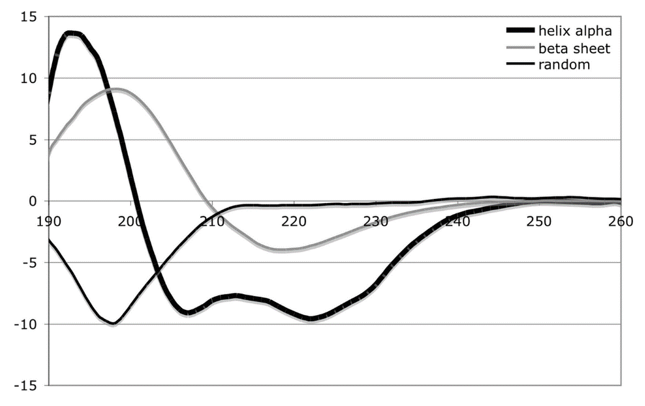Circular dichroism (CD) spectroscopy is a powerful technique that is sensitive to the chirality (handedness) of molecules. It can be used to study absolute stereochemistry, enantiomeric composition, racemization, enantiomeric differentiation, and molecular interactions and conformation. In addition, it is the preferred method for studying high-order structures of biological macromolecules (such as proteins, glycoproteins, and DNA). CD spectroscopy has been widely used in the fields of protein conformation research, enzyme kinetics, purity measurement of optically active substances, and quantitative analysis of chiral drugs.

Study drugs' mechanism of action
- Study the affinity of each enantiomer of chiral drugs with proteins and other biological macromolecules
In medicinal chemistry and biochemistry, the isomers of chiral drugs have different mechanisms of action, metabolisms in the body, and pharmacological effects. The CD spectrum can provide insights into each isomer's mechanism of action.
- Study the interaction between drugs and proteins
The interaction between drugs entering the body and various proteins in the body directly affects drug distribution, free concentration, metabolism, stability, toxicity, and so on. The CD spectrum can provide information about the interaction between drugs and proteins in vivo, which is of great significance in guiding drug design and clinical use.
In addition, when drugs interact with proteins, the synergistic effect of metal ions is often needed to adjust the structure of proteins to the state that binds drugs most easily. After the metal ions bind to the protein, the secondary and tertiary structures of the protein will undergo slight changes, which can be well observed by CD.
Protein drugs' quality control
- Study on protein stability
Protein drugs are often unstable and are easily affected by environmental factors such as temperature, pH, and concentration. Based on the advantages of CD's sensitive response to protein conformation, it can be used to investigate external factors affecting drug stability and find the best storage and use conditions.
- Confirmation of protein structure
The far-ultraviolet CD spectrum reflects the direction and energy level transition of the peptide bond arrangement in the regular secondary structure of the protein or polypeptide. Through the analysis and comparison of the band position and absorption strength, the ratio of T-helix, U-fold, turn, and irregular coil can be effectively calculated to study the secondary structure of different proteins or peptides.
The near-ultraviolet CD spectrum reflects the circular dichroism of aromatic amino acid residues and disulfide bonds in an asymmetric environment, and mainly reveals the tertiary structure information of proteins.
Determine the absolute configuration of chiral compounds
The CD spectrum is a spectrum related to the optical activity of a compound. It can provide structural information of many molecules, which can be used to determine the structure of chiral molecules and the absolute configuration of molecules.
Content determination of chiral drugs
The content determination of chiral drugs usually requires the combination of HPLC and CD. The CD detector has high selectivity and can eliminate interference from substrates and additives. With the further development of HPLC-CD detector technology, it will become an important detection method in research fields such as the preparation of optically pure enantiomers for pharmaceuticals, the metabolism of chiral compounds, and the determination of enantiomeric purity.
The main advantage of combining a CD detector with liquid chromatography is that it can determine enantiomer percentage under the chirality condition. For a single enantiomer, positive or negative peaks may appear in the chromatogram, while the racemate does not show a peak. If the enantiomer content is different, the chromatogram shows the signal peak of the dominant percentage enantiomer content.






